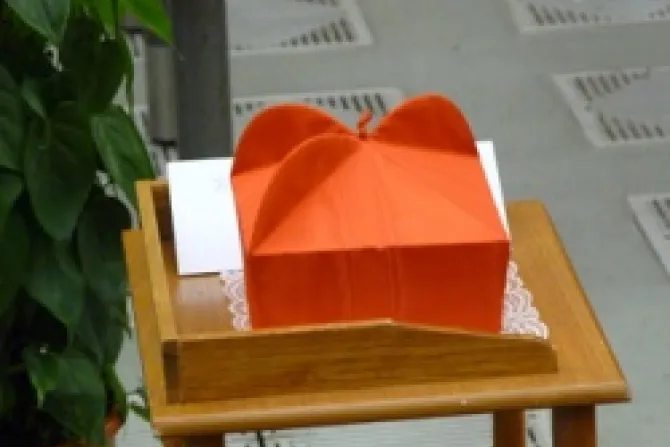Vatican City, Feb 15, 2014 / 06:09 am
Archbishop Beniamino Stella's career is characterized by his belief that a Vatican diplomat must have a strong priestly identity, which may well be why Pope Francis has appointed him to a cardinal's post.
Appointed prefect of the Congregation for the Clergy last September – a post that customarily brings with it the cardinalate -- Archbishop Stella,72, will receive the red hat at a consistory to be held Feb. 22.
Archbishop Stella was born in 1941 into a farming family in Pieve di Soligo, in Italy's Veneto region, one of 12 children.
He became acquainted with his bishop, Albino Luciani, and in 1960 he began seminary for the Diocese of Vittorio Veneto. Bishop Luciani went on to become, in 1978, John Paul I.
He was ordained a priest in 1966, and then specialized in canon law and entered the Pontifical Ecclesiastical Academy, which trains apostolic nuncios, on Bishop Luciani's recommendation.
Archbishop Stella's diplomatic service began in 1970, with four years in the Dominican Republic, four in the Democratic Republic of the Congo, five as charge d'affaires in Malta; he then served in the Council for the Public Affairs of the Church, part of the Secretariat of State.
In 1987, he was consecrated a bishop and appointed apostolic pro-nuncio to the Republic of the Congo, also coordinating for the Holy See with Central African Republic and Chad.
Archbishop Stella then served as apostolic nuncio to Cuba from 1992 to 1999. Fidel Castro was loosening the reins on the island's Catholic population, and the archbishop oversaw the creation of four dioceses and an increasing number of Catholic publications.
He contributed to the reinstatement of Christmas as a holiday in the country, as well as to the warming of relations between Cuba and the Vatican. He told La Stampa last year that in Cuba he found the Church as "a community that was lacking in resources and structures, which reminded me of the primitive Church. There was a strong sense of fraternity, poverty and detachment. I remember priests turning up to meetings on bicycles all sweaty but peaceful and generous. They were only too happy and willing to share their toil, poverty and humiliation with their people. We helped and loved each other."
He was well-loved by the Cuban bishops, who nicknamed him "Beniamino Corazon," or "Big-hearted Benjamin," and he oversaw Bl. John Paul II's 1998 visit to the country.
Archbishop Stella then served as nuncio to Colombia, where he stayed until 2007.
At that time, the country's conflict with the left-wing Farc rebels was ongoing but decreasing, yet many priests were killed in violence; he negotiated with the Farc for the 1999 release of the kidnapped Bishop Jose Quintero Diaz of Tibu.
In 2002, Archbishop Isaias Duarte Cancino of Cali was assassinated by the Farc, as an act of vengeance for his condemnation of their atrocities. At the funeral, Archbishop Stella intervened at protests which he said were lacking in respect for the late prelate.
Archbishop Stella was appointed president of the Pontifical Ecclesiastical Academy in 2007, where he directed that the future diplomats focus on their priestly spirituality and be able to "think and reason from the perspective of the universal Church."
On Sept. 21, 2013, Pope Francis appointed Archbishop Stella as head of the Congregation for the Clergy; shortly after, the new prefect told La Stampa that he believes Pope Francis "looks for people who give off a certain feeling of spiritual paternity. Paternity – and maternity – are terms he is very fond of. Spiritual paternity is to do with humanity, coherence and spiritual life. This leads to goodness, closeness, mercy and all the other virtues with which he is building his magisterium day by day."
Rather than having a fixed agenda at the congregation, Archbishop Stella said, "my plan is not my own, it's a plan every priest should have, which is to serve God, the Church, and the Pope with a true heart and encourage priests and seminarians to live the Gospel right to its core."
Archbishop Stella is among 19 men who will be given the red hat of a cardinal at the Vatican later this month. He is one of three who join the cardinalate by virtue of their office in the Roman Curia.


